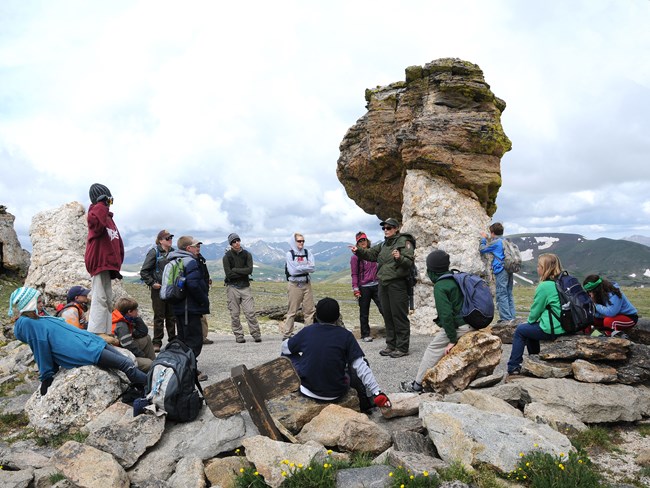
NPS Photo Field trip programs are offered for grades 6-12 from January through November, with a variety of topics available based on the season. 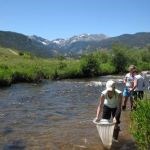
NPS Photo Aquatic EcologyDesigned for high school classrooms, students survey the riparian ecosystem and collect data on the water quality and invertebrate population to determine the health of the watershed in Rocky Mountain National Park. This program includes a discussion about the watershed and its challenges. Students analyze the health of the watershed in reference to its suitability as habitat for trout. This field trip is available in summer and early fall, weather permitting. Schedule a field trip. 
NPS Photo Alpine Tundra EcologyStudents explore the alpine tundra ecosystem. They conduct hoop plots to collect data about the identity and density of current tundra plants and animals. After, they consider how scientists are using this information to help plan for the current and future management of this ecosystem in a changing climate. Available in summer and early fall. Schedule a field trip. 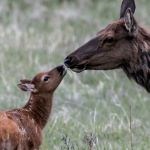
NPS Photo/A.Schonlau Elk Ecology and ManagementDesigned for high school classrooms, students investigate the effects of elk in Rocky Mountain National Park. Students use transect lines to collect data on elk densities and impacts on vegetation in the park, participate in a town hall meeting to debate how the elk should be managed, and learn how the park is currently managing the problem. Available in the fall, spring and summer seasons. Schedule a field trip. 
NPS Photo Fire EcologyStudents use the scientific method to investigate how a forest recovers after a fire. To investigate the issue, students look for clues, collect data, and evidence along a transect line, and draw conclusions about the role of fire in the montane ecosystem. They then use their new knowledge to determine how the forest is regenerating. Available in fall, spring and summer. Schedule a field trip. 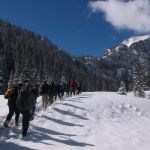
NPS Photo Winter EcologyStudents snowshoe from Bear Lake to investigate how plants and animals survive the winter conditions that exist in the Rocky Mountains. Students look for evidence of life, discuss the survival strategies of animals and plants, and explore how a changing climate might affect animals designed for eight months of winter conditions. Available only in the winter (typically January - March.) Field trip size is limited to about 30 students/day. Snowshoes are provided at no cost, courtesy of Rocky Mountain Conservancy. Schedule a field trip. 
NPS Photo Winter Mountain Safety and SurvivalStudents learn what materials to bring and what skills to know in order to survive a winter worst-case-scenario. They assess avalanche danger, use transceivers to locate a buried “person” and build a snow shelter. Available only in the winter (typically January - March). Field trip size is limited to about 30 students/day. Snowshoes are provided at no cost, courtesy of Rocky Mountain Conservancy. Schedule a field trip. 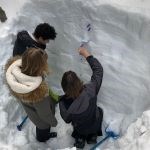
NPS Photo Snow ScienceDesigned for High School AP classrooms, students explore the science of snow in this hands-on snowshoe hike. Students learn about the characteristics of snow, dig a snow pit to look at layers, investigate and draw conclusions about the role of snow in Colorado’s watersheds and in the subalpine ecosystem. Students learn how this resource may be affected by climate change. Available only in winter (typically January - March). Field trip size is limited to about 30 students/day. Snowshoes are provided at no cost, courtesy of Rocky Mountain Conservancy. Schedule a field trip. 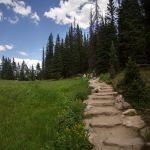
NPS Photo Walk of a NaturalistStudents meet some of the authors and naturalists that were inspired by and shaped the destiny of Rocky Mountain National Park and other special places. Students read and reflect on writings by the authors, and create their own poem or story using the mountains as their inspiration. Available year-round. Schedule a field trip. 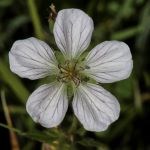
NPS Photo/A.Schonlau Ecosystem TransectsStudents use transect lines to compare and contrast two of the ecosystems found within the park and identify the characteristics that differentiate one ecosystem from the other. Available in fall, spring and summer. Schedule a field trip. |
Last updated: August 19, 2025
